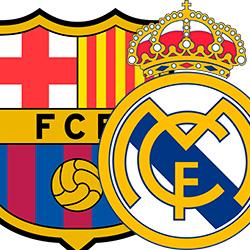1: The Genesis of Camp Nou
The Need for a New Stadium
The story of Camp Nou begins in the early 1950s. FC Barcelona’s previous stadium, Camp de Les Corts, could no longer accommodate the growing fan base. The vision for a larger, state-of-the-art stadium was spearheaded by the club’s then president, Francesc Miró-Sans.
Design and Construction
The design of Camp Nou was a masterpiece of modern architecture. Architects Francesc Mitjans, Josep Soteras, and Lorenzo García-Barbón were tasked with creating a stadium that was innovative yet reflective of Barcelona’s architectural heritage. The construction, which began in 1954, faced numerous challenges, including financial constraints, but was completed in just three years.
2: Architectural Marvel
Design Features
Camp Nou’s architecture is notable for its simplicity and functionality. The stadium’s open structure, large seating capacity, and lack of obstructive view points set new standards in stadium design.
Renovations and Expansions
Over the years, Camp Nou has undergone several renovations to enhance its facilities and increase its capacity, which at one point reached over 120,000. The most significant of these renovations was in preparation for the 1982 FIFA World Cup, which saw the addition of a third tier.
3: Home of FC Barcelona
A Symbol of Catalan Pride
For FC Barcelona, Camp Nou is more than a home ground. It represents the club’s motto, “Més que un club” (More than a club), embodying the Catalan spirit and identity.
Memorable Matches
Camp Nou has hosted numerous legendary matches, including pivotal La Liga games, Champions League nights, and El Clásico encounters against Real Madrid. Each game played in Camp Nou adds to the rich tapestry of its history.
4: The Fans and Atmosphere
The Supporters
The fans, known as ‘Culés’, are the lifeblood of Camp Nou. Their passion and loyalty are evident in the electrifying atmosphere they create during matches.
Famous Chants and Traditions
Matchdays at Camp Nou are filled with traditional chants and celebrations that reflect the unique culture of FC Barcelona and its supporters.
5: Camp Nou in Popular Culture
Representation in Media
Camp Nou has been featured in films, documentaries, and video games, highlighting its global cultural significance.
Tours and Museum
The Camp Nou Experience, including stadium tours and a visit to the FC Barcelona Museum, attracts thousands of visitors, showcasing the club’s history and achievements.
6. Impact on Football and Society
Hosting Major Events
Camp Nou has been a versatile venue, not just limited to hosting football matches. Its significance extends to a variety of major events:
- Concerts and Cultural Events: Camp Nou has been a sought-after venue for major concerts, hosting internationally renowned artists. These events have not only provided entertainment but have also been a vital part of Barcelona’s cultural landscape.
- Public Events and Gatherings: The stadium has been a center for significant public gatherings, including political rallies and community events, reflecting its role as a communal space in Barcelona.
- 1982 FIFA World Cup: As a pivotal venue during the 1982 World Cup, Camp Nou hosted several key matches, including the opening game. This elevated its global profile and showcased its capability to host large-scale international events.
Social and Economic Impact
Camp Nou’s influence extends into the social and economic spheres:
- Local Economy Boost: The influx of tourists for matches and events at Camp Nou significantly boosts local businesses, including hotels, restaurants, and retail. This economic stimulation is vital for Barcelona’s economy.
- Community Engagement: FC Barcelona, through its foundation and various initiatives, has leveraged Camp Nou as a platform for social projects, including youth programs, educational workshops, and charity events. This reflects the club’s commitment to using its resources for societal benefits.
7. The Future of Camp Nou
Renovation Plans – Espai Barça Project
The Espai Barça project is a transformative vision for Camp Nou and its surrounding areas:
- Revamping the Stadium: The project aims to modernize Camp Nou, increasing comfort and accessibility while preserving its iconic structure. The proposed renovations include the addition of a new roof, improved seating, and state-of-the-art facilities.
- Expanding Capacity and Functionality: While maintaining its historic essence, the plan includes expanding the stadium’s capacity and incorporating advanced technological features to enhance the fan experience.
- Integrated Sports Complex: The project envisions a comprehensive sports complex, including the stadium, a new Palau Blaugrana for basketball, and additional facilities for other sports, making it a multi-functional sports hub.
Sustainability Efforts
Sustainability is a cornerstone of the Espai Barça project:
- Eco-Friendly Design: The redevelopment plan includes eco-friendly measures such as energy-efficient systems, water conservation practices, and the use of sustainable materials.
- Reducing Carbon Footprint: The project aims to minimize the environmental impact of the stadium’s operations, focusing on reducing carbon emissions and implementing waste management strategies.
- Green Spaces and Accessibility: Espai Barça also includes the creation of green spaces around the stadium and improving public transport accessibility, promoting a healthier and more sustainable environment.
In conclusion, Camp Nou’s role in football and society is multifaceted, impacting cultural, economic, and social spheres. The Espai Barça project represents a bold step into the future, aiming to transform Camp Nou into a modern, sustainable, and versatile sports complex, while preserving its legacy and significance in the world of football. These initiatives reflect FC Barcelona’s commitment to innovation, community engagement, and environmental responsibility, ensuring that Camp Nou continues to be a beacon in the sports world for years to come.
Conclusion
Camp Nou is more than just the home of FC Barcelona. It’s a cultural icon, a testament to architectural ingenuity, and a temple for football lovers. From its roaring crowds to its historic matches, every corner of the stadium tells a story. As it evolves with time, Camp Nou continues to stand as a symbol of pride, passion, and excellence in the world of football.
